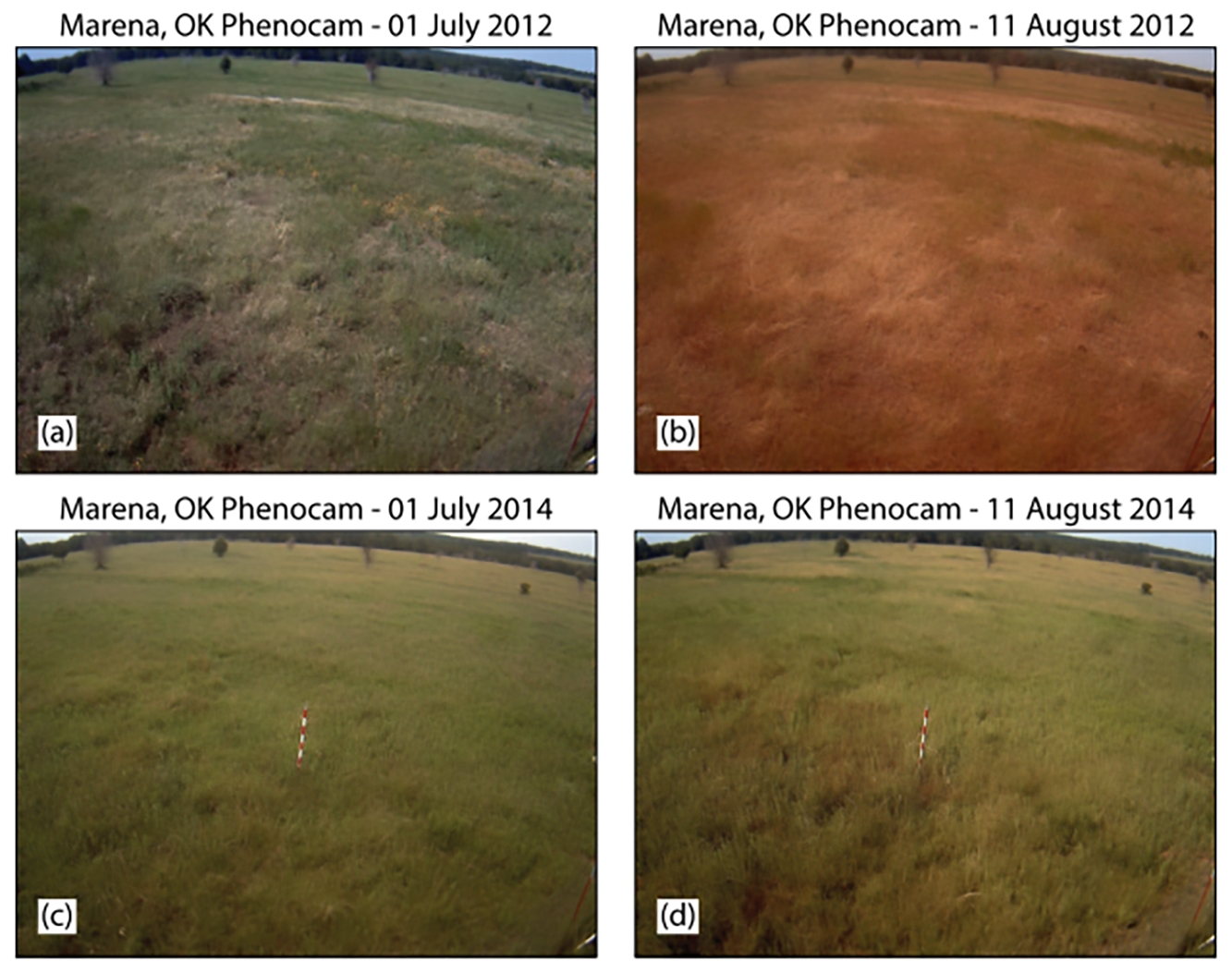The abrupt development of unanticipated drought, known as flash drought, can have a significant impact on agricultural and ecological systems, with far-reaching consequences. The University of Oklahoma is studying how the warming climate will alter the frequency of flash droughts and the risk to croplands worldwide.

A figure showing the impact of a flash drought on a grassland in Oklahoma. The photos on the top row show the impact of the flash drought on the ecosystem compared with photos of the same area without flash drought impacts (bottom row). Image Credit: The University of Oklahoma
Jordan Christian, a Postdoctoral Researcher, is the lead author of the study. The study was published in the journal Nature Communications Earth & Environment.
In this study, projected changes in flash drought frequency and cropland risk from flash drought are quantified using global climate model simulations. We find that flash drought occurrence is expected to increase globally among all scenarios, with the sharpest increases seen in scenarios with higher radiative forcing and greater fossil fuel usage.
Jordan Christian, Study Lead Author and Postdoctoral Researcher, University of Oklahoma
Radiative forcing explains the imbalance of radiation where more radiation reaches Earth’s atmosphere than leaves it. Activities like fossil fuel burning are one of the major contributors to climate warming. Storms, flash droughts, flash flooding, and other severe weather events are projected to become more often as the climate changes.
Flash drought risk over cropland is expected to increase globally, with the largest increases projected across North America and Europe. CMIP6 models projected a 1.5 times increase in the annual risk of flash droughts over croplands across North America by 2100, from the 2015 baseline of a 32% yearly risk in 2015 to 49% in 2100, while Europe is expected to have the largest increase in the most extreme emissions scenario (32% to 53%), a 1.7 times increase in annual risk.
Jordan Christian, Study Lead Author and Postdoctoral Researcher, University of Oklahoma
Christian’s faculty advisor and study co-author is Jeffrey Basara, an Associate Professor in the School of Meteorology in the College of Atmospheric and Geographic Sciences and the School of Civil Engineering and Environmental Sciences in the Gallogly College of Engineering.
Basara is the Executive Associate Director of the hydrology and water security program and the head of the Climate, Hydrology, Ecosystems, and Weather research group at the University of Oklahoma. Since 2017, researchers have been looking into ways to enhance flash drought detection and prediction, with many studies published in journals such as the Journal of Hydrometeorology, Environmental Research Letters, and Nature Communications.
This study continues to emphasize that agricultural producers, both domestic and abroad, will face increasing risks associated with water availability due to the rapid development of drought. As a result, socioeconomic pressures associated with food production, including higher prices and social unrest, will also increase when crop losses occur due to flash drought.
Jeffrey Basara, Associate Professor, School of Meteorology, College of Atmospheric and Geographic Sciences, University of Oklahoma
Journal Reference
Christian, J. I., et al. (2023). Global projections of flash drought show increased risk in a warming climate. Communications Earth & Environment. doi.org/10.1038/s43247-023-00826-1.